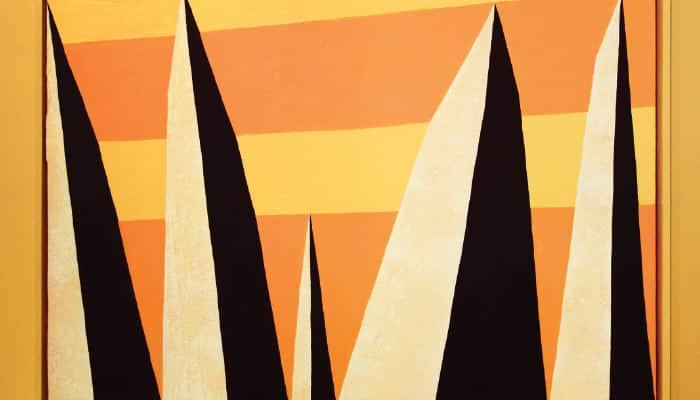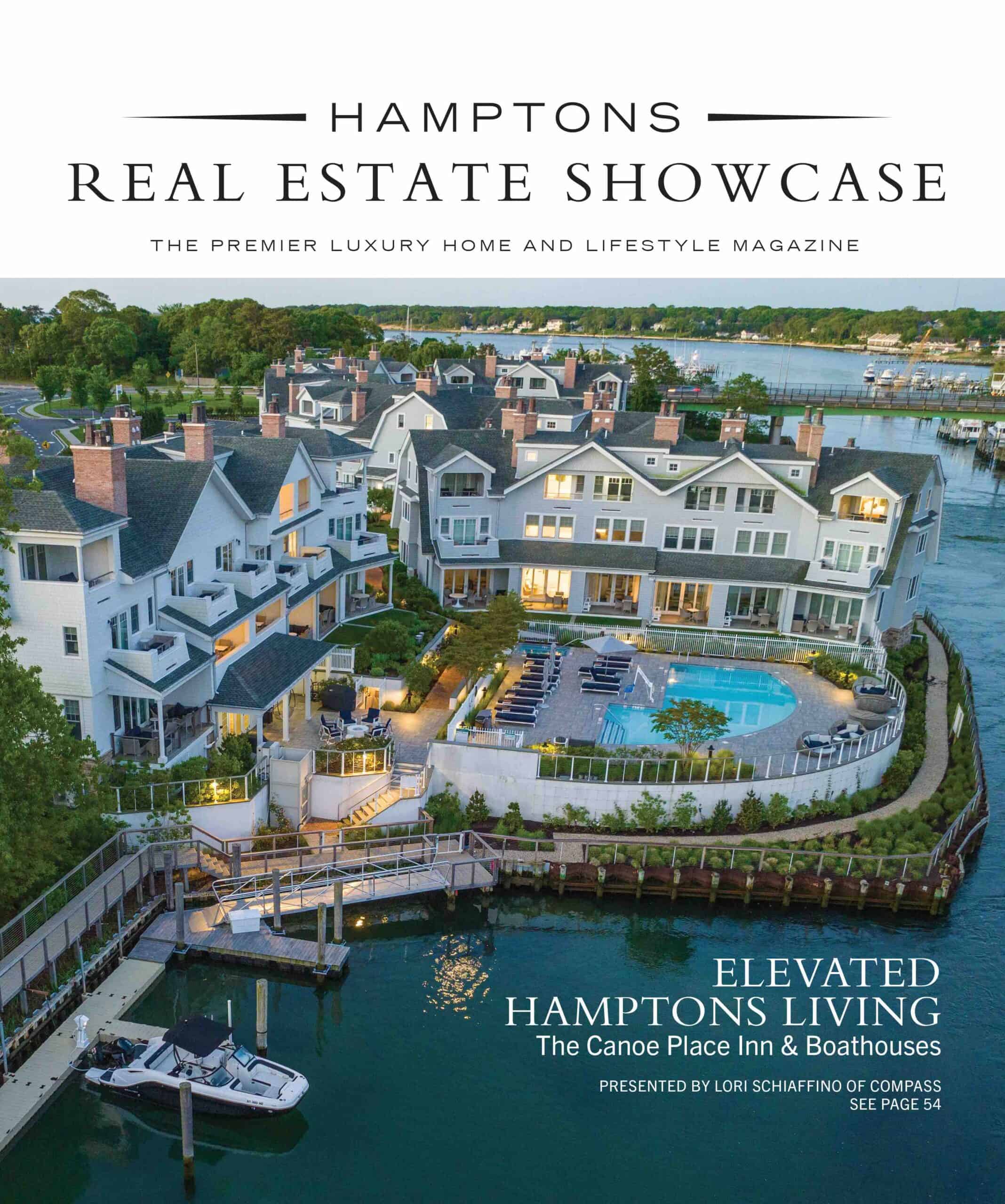In retrospect, painter Don Christensen was always headed for a career in art despite not embracing it as a career till midlife. As a kid, growing up in a small Nebraska farm town, he was always the artistic son while his older brother was the athletic one. “I was always drawing,” he says. But the family dynamics changed and his brother became an artist first. And quite a successful one. When his brother attended art school, Christensen says: “It really pissed me off. I didn’t want to compete with my brother.”
Instead he became a professional musician, playing in several bands, the last of which was the Raybeats, a neo-surf rock combo, according to Wikipedia. “We were making a living,” he says. The group was touring and cutting record deals, however, it disbanded in 1984. “There we were in our late thirties running around the country in Econoline vans playing rock ‘n’ roll for kids. “We just kind of looked at each other and said, let’s call it a day.”
At age 40 he opened a recording studio and “started making paintings for the fun of it,” he says. “Next thing I know I’m doing it after work and on weekends.” Things changed for him after the summer of 1990, which he spent in East Hampton for the first time. He returned to the city that fall, then turned around and came back for good.
“I got lucky. Within a couple of years, I got grants.” Indeed, one was one of the last individual arts fellowships awarded by the National Endowment for the Arts. He also held his first solo show at the Douglas Drake Gallery on 57th Street in the city, where he displayed his first go at painting crosses. The show generated wide recognition.

His intent was to explore the relationships of colors. “But I wanted to do it simply — cross two lines with two different colors and put them on a background of another color; that sets up a lot of possibilities.” One reviewer wrote that the paintings resembled musical chords, which makes a lot of sense considering that Christensen “looks for harmony” is his compositions. “There is a single blend of sound even though you can see the individual notes.”
Those early crosses were painted mostly on discarded wood he collected at building sites. The artist still paints predominantly found objects, but now he haunts yard sales on the lookout for step stools and tables. His initial work on tables didn’t work for him till he had a brainstorm and hung the tables on the wall sideways by the legs, making the tabletop the canvas.
He believes that mixing such whimsical pieces gives his “Modernist formalism, what they used to call ‘high art,’ more of a folky outsider thing. I think that is the attraction for me.” He showed several of these at a group show at the Parrish Art Museum alongside works by such artists as Laurie Anderson and Keith Sonnier.
Perhaps what makes Christensen’s works stand out the most is his use of highly saturated bright pigments, or what he calls “up colors.” His choice of colors is “totally intuitive,” he says. “My color theory is that no color exists on its own, only in relation to other colors.” More than an intellectual exercise, his use of color enables him to enter a creative zone. “If you want to put red paint on something, go with it,” he says. “That sounds like it’s easy but it’s not, especially after you’ve been working awhile. You start thinking about other art you’ve seen, your audience and the market – or even mowing the lawn. You have to stay with that pure place of impulse to do something that’s not married to any reason to be doing it. It’s hard to maintain that state of mind. You have to trust yourself.”









![Experience the best of both worlds with exclusive beachfront and boating access in this exceptional Southampton property. Set in a sought-after waterfront community, 21 East Shore Drive offers an impressive 111± ft. of private sandy beach and protected bulkhead, with water on both sides. Represented by @angelaboyerstump of @sothebysrealty. [link in bio]](https://hamptonsrealestateshowcase.com/wp-content/uploads/sb-instagram-feed-images/488569507_18501957808030135_1349506531287636033_nfull.webp)
![First time ever on the market, this is a unique opportunity to own in the desirable and charming Historic District in the Village of Sag Harbor. 63 Glover Street is considered the most sought-after in the Village, boasting 100± ft. of panoramic water frontage, half bulkheaded, on Sag Harbor Cove with a deep water dock and a separate living cottage. Represented by @thebestofthehamptons of @brownharrisstevens. [link in bio]](https://hamptonsrealestateshowcase.com/wp-content/uploads/sb-instagram-feed-images/488065237_18501743197030135_1061235731645102537_nfull.webp)
![Drawing inspiration from the Greek Revival style of architecture, 7 Somers Place was developed by Sag Harbor master builder, Robert Tortora. The gracious living room with mantled masonry fireplace and elevated ceilings flows to the spacious dining room and custom light-filled kitchen. Represented by @thechrisritchey and Kim Hovey of @compass. [link in bio]](https://hamptonsrealestateshowcase.com/wp-content/uploads/sb-instagram-feed-images/488012730_18501545716030135_2576407923807360973_nfull.webp)
![Elegance and intelligence abound at this waterfront masterpiece with 8,065± sq ft, 7 bedrooms and 8.5 baths. 101 Jessup Lane boasts a sweeping double stairway entry hallway, 7 romantic fireplaces, a large gathering room, formal dining room, billiard room, and exercise room with sauna. Represented by @rydbergkent of @douglaselliman. [link in bio]](https://hamptonsrealestateshowcase.com/wp-content/uploads/sb-instagram-feed-images/486626595_18501344173030135_6414454892538890571_nfull.webp)
![Discover fabulous floral finds and nature-inspired treasures to bring beauty and charm to your life. Whether you’re adding a touch of nature to your home or finding the perfect gift, these blooming delights are sure to brighten your day! [link in bio]](https://hamptonsrealestateshowcase.com/wp-content/uploads/sb-instagram-feed-images/487711988_18500839267030135_4881948075500906108_nfull.webp)
![Spring, of course, leads inexorably into another summer season here in the Hamptons. According to agents we spoke to, demand is quite strong this year for rentals. A quality medium-priced property, well presented with amenities, is eagerly sought-after. Publicly listed rentals range from a high of $2.5 million, Memorial Day to Labor Day, on Cobb Lane in Water Mill, with quite a few more $1 million plus rentals than usual. [link in bio]](https://hamptonsrealestateshowcase.com/wp-content/uploads/sb-instagram-feed-images/486541532_18500603206030135_1827695170316201968_nfull.webp)
![Perched atop the dunes at Louse Point sits a picturesque house, perfect for enjoying all seasons that East Hampton has to offer. Situated on three quarters of an acre with almost 360 degree views of Gardiner’s Bay and Accabonac Harbor, 86 & 88 Louse Point are truly unique. Represented by @petrieteam of @compass. [link in bio]](https://hamptonsrealestateshowcase.com/wp-content/uploads/sb-instagram-feed-images/486615712_18500408650030135_1498783920053065135_nfull.webp)
![Set to be completed this year, this extraordinary property spans 2.5± acres of cleared land and showcases over 12,125± sq. ft. of architectural sophistication and refined design. With 9 bedrooms, 11 full baths, and 2 half baths, 261 Millstone Road offers an exceptional blend of spaces for both relaxation and entertainment. Represented by @susan.breitenbach of @thecorcorangroup. [link in bio]](https://hamptonsrealestateshowcase.com/wp-content/uploads/sb-instagram-feed-images/486599655_18500185618030135_8926656954621895711_nfull.webp)
